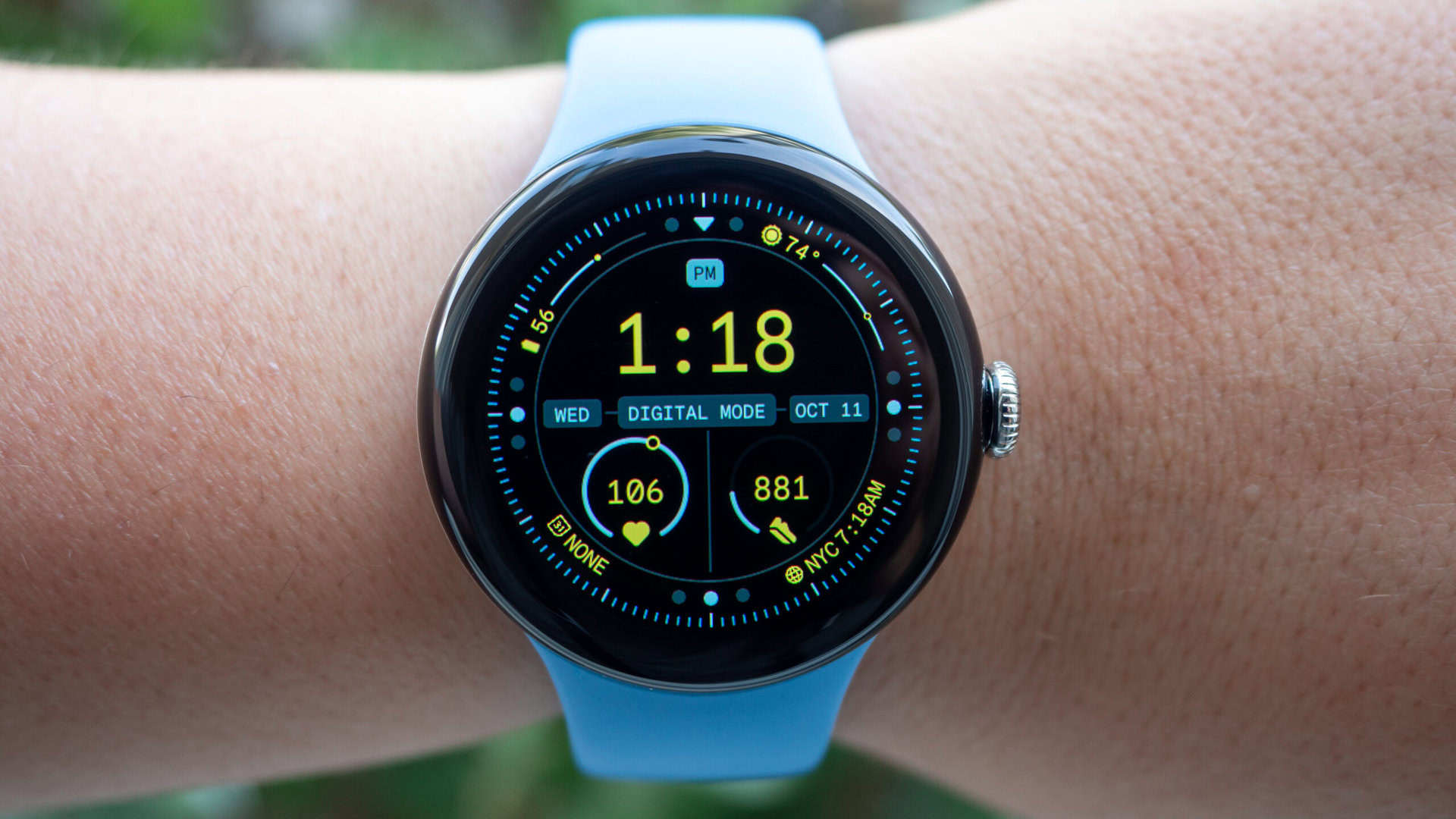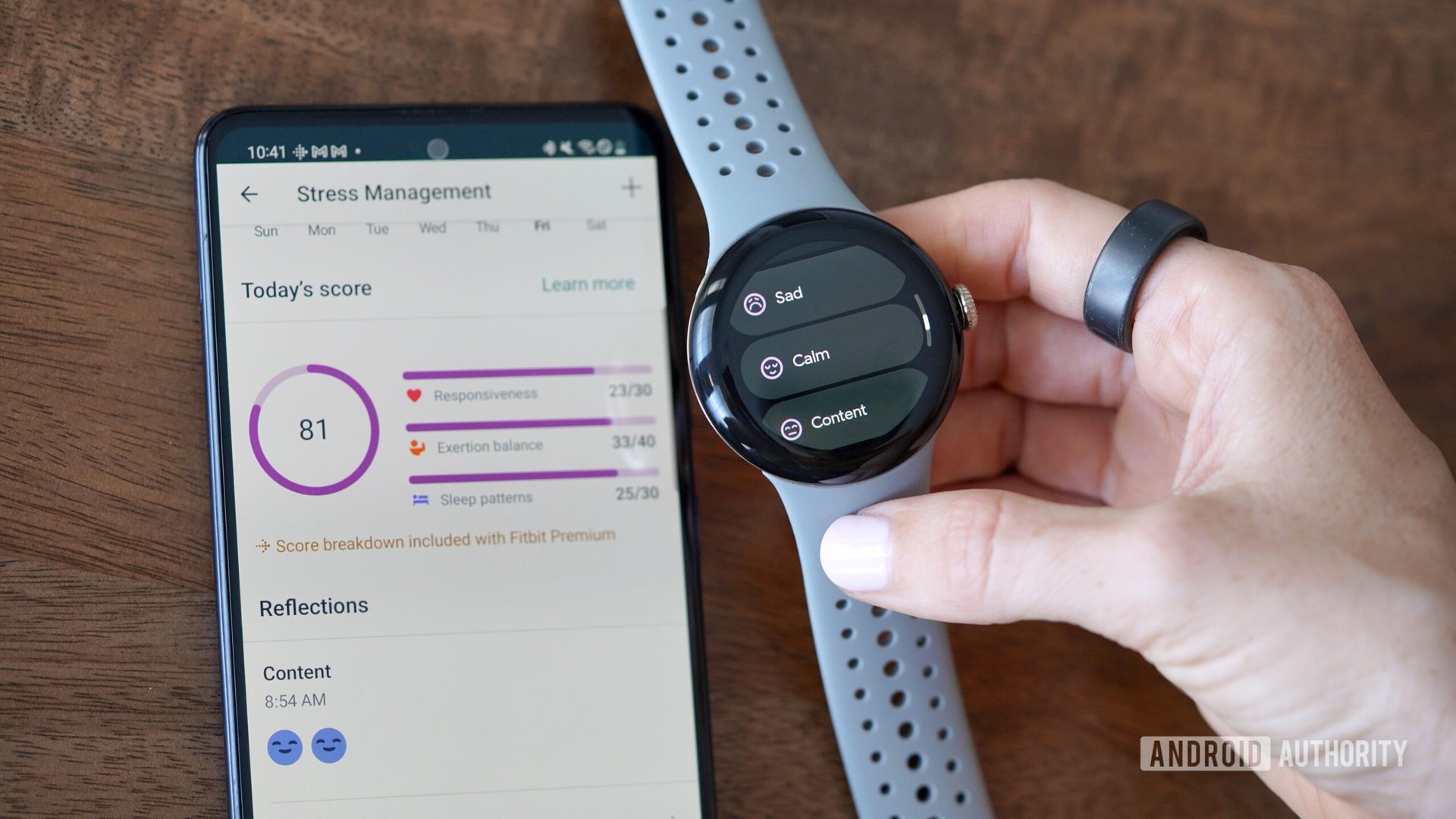Affiliate links on Android Authority may earn us a commission. Learn more.
Out of the box, the Pixel Watch 2 is awful at promoting its health features

In our Pixel Watch 2 review, my colleague Kaitlyn Cimino pointed out how confusing the watch’s setup was even for her — a seasoned wearables reviewer who’s been doing nothing but testing smartwatches for a living for the past couple of years. Tech YouTuber DMS had similar experiences. I think their argument needs to be explored further than a quick comment in a long review.
See, I had the opposite experience with my own Pixel Watch 2 setup. I didn’t need many resets like Kaitlyn did, I never had to place the watch on my wrist and on the charger simultaneously like DMS did, and linking my Google and Fitbit accounts was seamless. But it is exactly because things were seamless that I am disappointed. I did everything right, everything worked as it should, and yet out of the box, several of the features that Google was bragging about were nowhere to be found.
My Pixel Watch 2's setup went smoothly and yet many marketed features were missing or disabled.
I couldn’t take an ECG measure because the app wasn’t pre-installed. Automatic exercise tracking didn’t start when I started walking, nor did it end when I stopped. Stress management wasn’t enabled. And I would’ve never gotten any low or heart rate notifications, or any irregular heart rhythm (Afib) notifications, because those weren’t turned on.

Now you may think that’s normal. Lots of tech, including the best phones and smartwatches, require you to enable features first. They don’t force everything on everyone. And you’re right. They don’t.
But that’s why there’s an onboarding process. That’s why when you first set up a new piece of tech, the good developers of said piece of tech usually think about all the cool features they’ve spent months working on and they surface them to you, from the get-go. It’s a simple feature: a pop-up or a menu at the beginning that asks “Hey, new user, would you like to turn this on? Yes. No.” And you tap and it’s done.
A good onboarding process ensures your new users can easily understand all the value they're getting out of their new gadget.
If the Pixel Watch 2’s onboarding was done properly, I wouldn’t have had to go digging for the very health and fitness features that made me want to wear the Pixel Watch 2 in the first place. And I wouldn’t have had to do that digging on multiple devices (some are on the phone, others on the watch) and in multiple apps (Pixel Watch app and Fitbit app).
As a new Pixel Watch 2 user, this is what I had to do to ensure I had all the features and all the marketed experiences I was promised:
- To activate automatic exercise detection, auto-pause, and auto-resume, I had to open the Fitbit Exercise app on my Pixel Watch 2, pick an exercise, tap the settings cog, then toggle on Start workout reminders, End workout reminders, and Auto-pause. I had to repeat that for every type of exercise I’m interested in tracking because the settings aren’t universal.
- To get the ECG app, I had to open the Play Store on my Pixel Watch 2, tap the search button, type ECG, and download the Fitbit ECG app. (If you can’t find it, it means you’re using a Play Store account from a country where the ECG app hasn’t obtained regulatory approval yet.)
- To get notifications of high and low heart rates on my Pixel Watch 2, I had to open the Fitbit app on my phone, go to the You tab, look under Health assessments for the High heart rate notifications, and set them up.
- I had to repeat that step and look for the Irregular rhythm notifications card to enable Afib notifications on the Pixel Watch 2. I don’t want to see those notifications, ever, but hey, I want the feature enabled should I ever be in danger.
- To get notified when the Pixel Watch 2 detects that I’m stressed, I had to go to my profile in the Fitbit app, tap Fitbit settings > Activity & Wellness > Stress Management and enable the notifications.
That is a lot of jumping around that I expect few normal users will know how to do without spending some time Googling the answers. That is if they know those features exist and they’re actively trying to enable them. The worst part is that many Pixel Watch 2 buyers may never know that their smartwatch has all these capabilities and will spend months with a subpar experience. Or, even worse, they might trust that crucial functions like Afib detection or high/low heart rate notifications are working out of the box when they clearly aren’t.
Onboard, explain, and let the user make an informed decision about what to enable. Just don't play hide-and-seek with essential features!
The solution is simple. Onboard your new users, Google. Show them some welcome screens explaining everything that’s possible with the Fitbit integration and let them enable what they want and reject what they don’t. But please, just surface these in a coherent manner instead of hiding them away.
